Redesign of the onboarding of new customers in the Gympass service
- My role
- Management of a team of 9. Implemented design and product processes. User research, prototyping and UI design.
- Results
- Increased conversion rate of new customers. Decreased registration errors and reduced customer service costs.
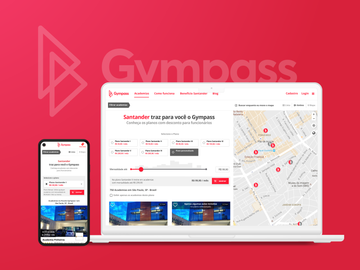
Gympass is a company that offers an unlimited gym service as a benefit for employees of other companies. With a wide network of partner establishments in several countries, the company has conquered a considerable number of companies that adopt the benefit for their employees.
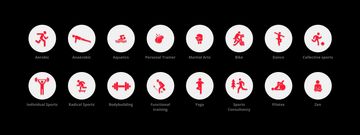
The variety of modalities was a great attraction for customers
At that moment, the hiring of the benefit by employees of client companies was one of the main indicators of success. We decided to investigate the problems in this journey and propose solutions that would make the service easier to use.
Process
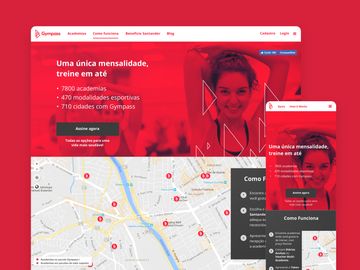
Explaining what the Gympass service offered became one of the priorities of the UX team
Reports of customers having difficulty contracting the service were common, so we decided to explore the initial experience of those who are interested in the service.
Thus, we conducted interviews and usability tests to identify problems, difficulties with the interface, unmet needs, and business opportunities.
For this research, we specifically sought people who:
- Worked in companies similar to client companies and did not know about Gympass
- Were interested in or practiced some physical activity
The interview aimed to investigate the context and needs of these people. The usability test, carried out afterwards, included a simulation of presentation and hiring of services on mobile and desktop devices.
Learnings
Overall, several customers got lost in the middle of the hiring flow, going back and forth between steps or simply abandoning the task.
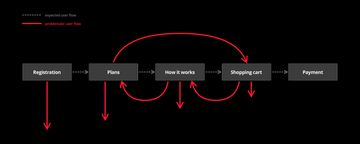
Several obstacles during the hiring of the service confused future customers and resulted in the abandonment of the task
The learnings from this investigation fit into 3 categories:
What does the company do?
- Many customers confuse the service with a network of gyms
- When the customer already attends a gym and understands the service, the first question is whether their gym is part of the network
- Many customers decide to hire only after finding gyms available in the region where they live or work
How do I subscribe?
- The initial form requests data that users often do not understand
- A constant question is whether the customer should pay per class, per gym, or per plan, and what the payment method is
- Customized plans are a common need
How do I use the gyms?
- After hiring, many customers do not understand how the product should be used
- Some customers think that an additional registration is required at the gym to be able to use the benefit
- Questions about the activity also arise: where do I keep my workout plan? Where do I schedule classes?
We realized that the biggest pains occurred in 2 steps. Therefore, we decided to explore solutions at the moments of the journey:
- Explanation of the service
- Initial registration form
Recreating the pages: Plans and “How It Works”
In the original interface, important information for discovering the product had less priority.
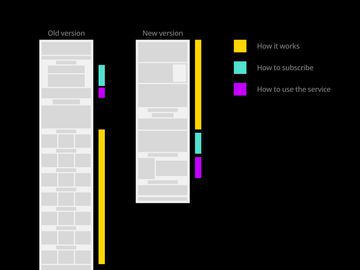
At this moment, it was essential for users to understand what the product could offer
We reorganized the content and built dynamic functions, such as displaying gyms and modalities according to the customer’s geolocation.
- Updated map with gyms in the user’s surroundings
- Main gyms available in the region, ordered by the number of active customers
- Types of physical activity available in the city
- Clear explanation of how the plans work
- Clear explanation of how to use the gyms after hiring

A/B test
We validated the solution with an A/B test executed for 3 weeks. The number of visitors to each variation allowed us to find a difference between the samples with statistical significance of 90.2%.
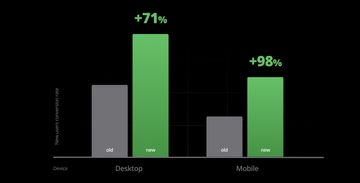
We were able to find a clear difference in the behavior of those who used the new version of the interface
Redesigning how we explain the Gympass service and displaying information about gyms and activities led to a considerable increase in the conversion of new clients.
Login System
To identify clients, Gympass uses unique data provided by the client company. For some companies, it’s the corporate email, for others, the phone number, and for others still, an employee ID or even a randomly generated key.
The major challenge of this interface was to allow the entry of different data, prevent errors, and assist in error correction by clients.

Allowing B2B2C or B2C clients to navigate without depending on assistance was essential for the success of the business
As the project had a higher technical complexity, its implementation was not completed during my time at the company.
My Role
I was the leader responsible for investigating and proposing solutions to the onboarding problems of new clients. I also participated as a researcher and directly prototyped some solutions, in addition to coordinating the team of designers, researchers, and frontend developers.